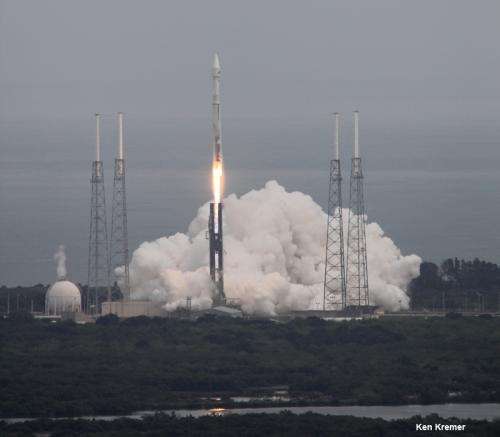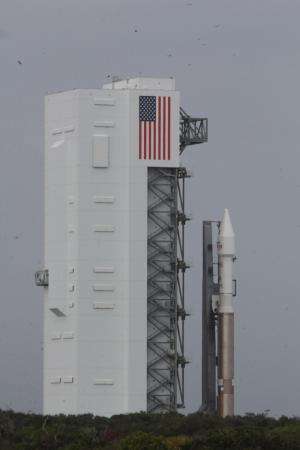Orbital Sciences selects ULA's Atlas V to launch next Cygnus cargo ship to station

Following the catastrophic Oct. 28 failure of an Orbital Sciences Corporation Antares rocket on a critical resupply mission to the space station for NASA, the company is seeking to quickly make up the loss to NASA by announcing the selection of the venerable Atlas V rocket built by United Launch Alliance to launch Orbital's next Cygnus cargo ship to the orbital science lab.
Orbital and ULA signed a contract to launch at least one, and up to two, Cygnus cargo missions to the International Space Station (ISS) under NASA's Commercial Resupply Services (CRS) program.
The first Cygnus mission would liftoff sometime late in the fourth quarter of 2015 aboard an Atlas V 401 vehicle from Space Launch Complex 41 (SLC-41) at Cape Canaveral Air Force Station in Florida.
Given that ULA's full launch manifest was fairly full for the next 18 months, Orbital is fortunate to have arranged one or two available launch slots so quickly in the wake of the Antares launch disaster.
"Orbital is pleased to partner with ULA for these important cargo missions to the International Space Station," said Frank Culbertson, Orbital executive vice president and general manager of its Advanced Programs Group.
"ULA's ability to integrate and launch missions on relatively short notice demonstrates ULA's manifest flexibility and responsiveness to customer launch needs."
Orbital also stated that there will be "no cost increase to the space agency" by utilizing the Atlas V as an interim launcher.
If necessary, a second Cygnus would be launched by the Atlas V in 2016.
The 401 version of the Atlas uses a 4 meter diameter payload fairing, no solid rocket boosters strapped on to the first stage, and a single-engine Centaur upper stage.
Orbital had been evaluating at least three different potential launch providers.

Observers speculated that in addition to ULA, the other possibilities included a SpaceX Falcon 9 or a rocket from the European Space Agency at the Guiana Space Center.
"We could not be more honored that Orbital selected ULA to launch its Cygnus spacecraft," said Jim Sponnick, vice president, Atlas and Delta Programs.
"This mission was awarded in a highly competitive environment, and we look forward to continuing ULA's long history of providing reliable, cost-effective launch services for customers."
The Orbital-3, or Orb-3, mission that ended in disaster on Oct. 28 was to be the third of eight cargo resupply missions to the ISS through 2016 under the NASA Commercial Resupply Services (CRS) contract award valued at $1.9 Billion.
The highly anticipated launch of the Antares rocket on Oct 28 suddenly went awry when one of the Soviet-era first stage engines unexpectedly exploded and cascaded into a spectacular aerial fireball just above the launch pad at NASA's Wallops Flight Facility on the Orb-3 mission to the ISS.
Read my earlier eyewitness accounts at Universe Today.
Orbital was awarded a $1.9 Billion contract with NASA under the CRS program to deliver 20,000 kilograms of research experiments, crew provisions, spare parts, and hardware for the eight ISS flights.
In choosing the Atlas V with a greater lift capacity compared to Antares, Orbital will also be able to significantly increase the cargo mass loaded inside the Cygnus by about 35%.

This may allow Orbital to meet its overall space station payload obligation to NASA in 7 total flights vs. the originally planned 8.
The venerable Atlas V rocket is one of the most reliable and well built rockets in the world.
Indeed the Atlas V has been entrusted to launch many high value missions for NASA and the Defense Department – such as MAVEN, Curiosity, JUNO, TDRSS, and the X-37 B.
MAVEN launched on a similar 401 configuration being planned for Cygnus.

The two-stage Atlas rocket is also being man-rated right now to launch humans to low Earth orbit in the near future.
Orbital is still in the process of deciding on a new first stage propulsion system for Antares' return to flight planned for perhaps sometime in 2016.
Source: Universe Today




















